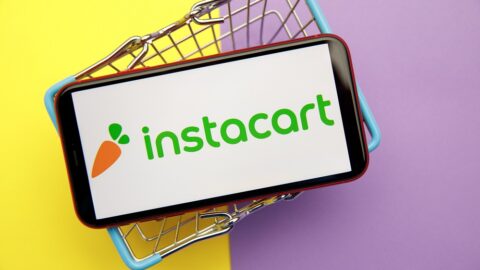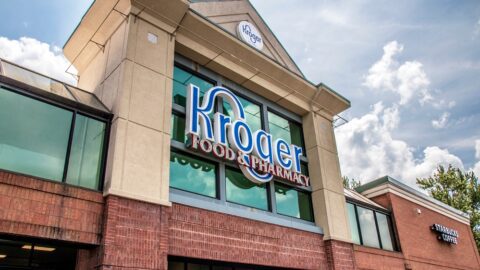Retailers often think about the checkout process as if it’s an isolated obstacle separate from the rest of the shopper journey, particularly on mobile devices. It’s true that confirming a purchase is the final step standing between an abandoned cart and a successful transaction, so it makes sense that it gets examined in isolation. Even so, retailers can benefit when they view checkout challenges in the context of shoppers’ full range of expectations.
“We’ve been feverishly optimizing the checkout since we started doing ecommerce, so much so that there might be teams within the retailers whose entire purview is just optimizing that page, what happens after the buy button is clicked and things like this” said Lily Varon, Senior Analyst at Forrester in an interview with Retail TouchPoints. “But I think what our research shows is that when you have a little bit broader of a view — when you think about the checkout experience as connected to the rest of the customer journey and connecting things like loyalty, service, wish lists and things like that — you actually have a better checkout experience.”
Forrester reviewed some of the biggest challenges faced by retailers trying to create great mobile experiences in its Retail Mobile Websites: Checkout And Payments Features Best Practicesreport. Key takeaways include:
- Guest checkout is key to a great experience: Retailers should still strive to make it as easy as possible for mobile customers to check out, and one of the key methods is enabling guest checkout — without sacrificing too many data collection opportunities;
- Maximize options using minimal space: Failing to offer a shopper the right payment or review option can be the difference between a successful sale and a displeased former customer, so retailers must learn how to offer multiple services without overcrowding small mobile interfaces; and
- Mobile checkout needs an omni approach: The industry already is familiar with the importance of breaking down silos to create a true omnichannel experience, and retailers need to replicate that mindset to properly connect mobile checkout with all relevant parts of the business.
Guest Checkout is Necessary, but Logins Can be Encouraged
One of the major takeaways from Forrester’s report is that shoppers don’t necessarily want to check in to check out — 55% of participants in the usability test portion of the firm’s review, which studied 10 retail mobile retail sites, said guest checkout is important. However, retailers need to find a way to offer this option without sacrificing the benefits that come from knowing who’s using your site.
The best, if not the easiest way to do so is to make logging in just as convenient as using the guest checkout option. This is where integration with other aspects of the business can come into play, such as using loyalty information to autofill relevant fields. This won’t appeal to every customer, but it is a useful option in fighting back against the password fatigue that affects both new and returning shoppers.
“Ensure that that journey is as optimized as it can be to reset the password or to use things like one-time pass codes or biometric ID,” said Varon. “That’s one key reason why customers don’t want to authenticate —they don’t want to have to remember another password. So how can we make that easier? If we want to convince them eventually to create an account, how do we make it less painful?”
Another major reason for choosing guest checkout is that many shoppers don’t want to hand their personal information over to retailers. One way to get around this is touting the benefits of logging in, such as earning loyalty points and enabling more convenient future checkouts, up front.
However, there also is an element of trust, or rather mistrust. Shoppers don’t want to provide an email address if it means their inbox will be filled with offers that don’t interest them, and retailers need to address that issue head-on.
“Use really transparent language about how you’re going to use their data, and what options they have to control how you use their data,” said Varon. “If after reading your messaging they trust that you’re not going to spam them, you’re not going to sell their data and they can control the cadence of your marketing, that’s another piece of the puzzle.”
Collapsible Elements Make Great Use of Limited Space
While BNPL adoption is still relatively low in the U.S., Forrester found that 40% of online shoppers wish that retailers and brands offered more of these alternative payment options. Additionally, 21% of online shoppers have used Apple Pay and 11% have used Google Pay in the past three months to make a purchase, presenting a plethora of options retailers will want to offer if they don’t want to risk losing shoppers at the last minute.
However, this also runs headlong into a challenge Forrester uncovered in its report: 33% of shoppers who don’t use their smartphone to purchase products or services say it’s because “it’s easier to make a purchase on a computer than on a smartphone,” and 23% say it’s because “the screen on my smartphone is too small.” Space is at a premium on mobile devices, and each option takes up precious pixels.
“We found that the consumer pain point of the screen being too small was really a hindrance when it came to checkout,” said Nicole Murgia, Researcher at Forrester in an interview with Retail TouchPoints. “If you think about when you’re checking out on a computer, you are usually able to see the larger screen and you can see what stage in the process you’re at, and [you] can easily use back buttons easily to correct anything.”
Retailers that did a good job rising to this challenge use options like collapsible banners and autofill options for information such as shipping addresses, according to Murgia. She noted that Nike has done a particularly good job in this regard, with a checkout page designed to make it easy to review inputs — the “back” button of a desktop site is replicated on mobile using a collapsible banner that contains previously entered information.
Managing numerous payment options brings data into play. Retailers that know a shopper’s history can put their preferred payment methods front and center, smoothing out the checkout process and making the most of limited space. However, because this data isn’t available for guest and unauthenticated checkouts, collapsible elements are once again a useful tool in these cases.
“You can categorize payment methods using nested banners that say pay with card, pay with digital wallet or pay with BNPL,” said Varon. “You nest those payments experiences and let customers navigate to the subsection of payment methods that are most relevant to them.”
Overcoming Change Fatigue Requires a Top-Down Approach
It should be clear by now that while mobile checkout is just one part of the customer journey focused on a single channel, it takes a companywide effort to get it right. Teams in charge of multiple facets of the business, from technology to customer data and experience, need to come together to ensure that this final stretch of a customer journey properly ties into the rest of it. Getting everyone working in synch is a task for a company’s top leaders.
“There’s no silver bullet, and organizational change has to happen from the highest kind of posts in the organization,” said Varon. “I think there has to be incentive from the C-suite to break down those silos. Much like we’ve been talking about breaking down the silos between ecommerce and store operations, the silos between the different parts of the business at this more micro level need to be broken down as well.”
However, that is easier said than done. The past few years have been a time of rapid change for the industry, with retailers constantly chasing the latest technological trends to keep pace with evolving customer expectations. The idea of significantly changing something as seemingly small and specific as mobile checkout can feel unnecessary in comparison, leading to what Varon called change fatigue.
However, the same best practices that have helped retailers modernize their operations as a whole also can apply to optimizing checkout. Understanding what has worked, and calling on leaders to carefully direct new projects, can help companies create strategies that generate efficient outcomes and overcome change fatigue.
“The change that we have undergone can help and contribute to change on these smaller customer journey optimization projects,” said Varon. “But if we have employees who are tired of change, it could slow that down, so change management is very important.”













